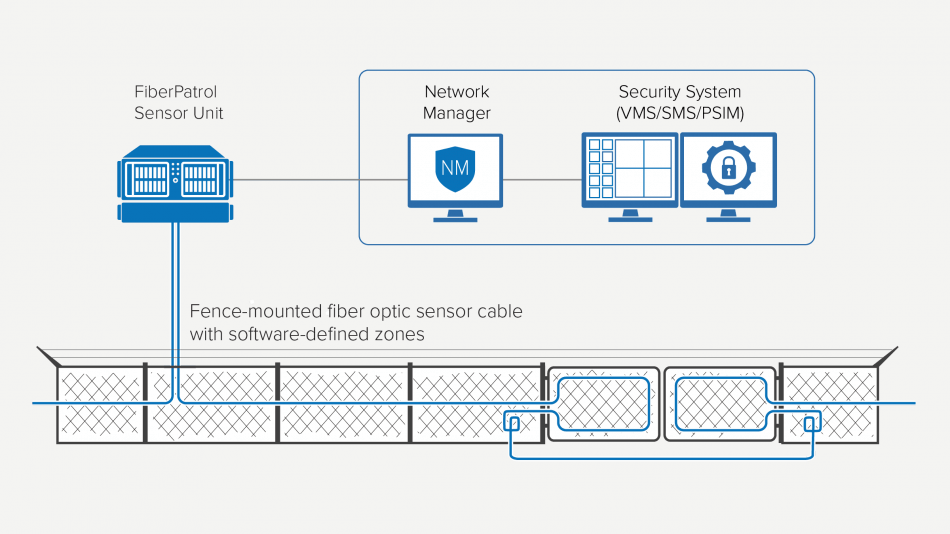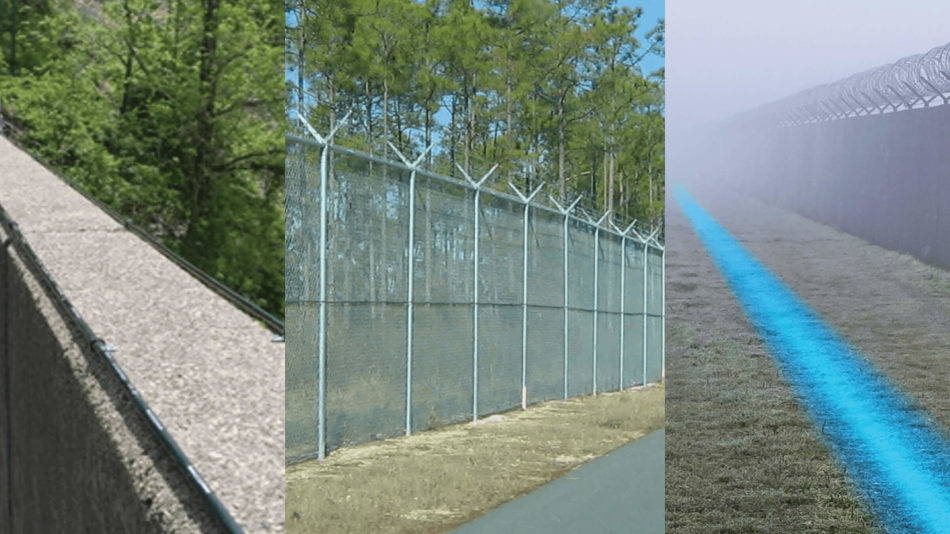The Advantages of a Fiber Optic Security System for Modern Security Solutions
Secure Your Home With Reliable Fiber Optic Protection Solutions
In an era where security threats are progressively sophisticated, the requirement for efficient defense solutions is vital. Fiber optic safety and security systems stand out by using exceptional reliability and efficiency, leveraging sophisticated light transmission technology to enhance monitoring capabilities. security fibers. Comprehending the intricacies of fiber optic safety and security can light up the path to securing your residential property more properly.
Advantages of Fiber Optic Safety
Fiber optic protection solutions provide an array of advantages that make them increasingly vital in today's electronic landscape. Among one of the most substantial advantages is their premium data transfer capability, which enables the transmission of huge quantities of information over long ranges without substantial signal destruction. This capability is especially advantageous for safety systems that depend on high-def video clip security and real-time monitoring.
Furthermore, fiber optic cable televisions are inherently extra safe and secure than typical copper electrical wiring. They are unsusceptible to electromagnetic disturbance, making them less susceptible to hacking or eavesdropping. This improved safety and security is crucial for protecting sensitive data and keeping the stability of security systems.
Furthermore, fiber optics are much more long lasting and resistant to environmental aspects, such as wetness and temperature fluctuations, making certain long-lasting dependability and reduced upkeep prices. The lightweight nature of fiber optic wires additionally simplifies installation processes, enabling for better adaptability in system design.
Exactly How Fiber Optic Equipment Work
In modern-day safety applications, the operation of fiber optic systems counts on the concepts of light transmission via adaptable glass or plastic fibers. These fibers are made to lug light signals over long ranges with marginal loss, making them excellent for transferring data related to safety surveillance. The core of the fiber, surrounded by a cladding material, makes sure that light signals stay contained within the core with a phenomenon known as overall inner reflection.
When incorporated right into security systems, fiber optic wires can send data from various sensing units, such as electronic cameras, motion detectors, and alarms, to a main tracking station. The high data transfer capability of optical fiber enables the transmission of big amounts of data all at once, enabling real-time surveillance and prompt reaction to prospective dangers.

Kinds of Fiber Optic Protection Solutions
Different kinds of fiber optic safety and security remedies have emerged to boost surveillance and security across various atmospheres. One famous service is fiber optic boundary breach discovery systems (PIDS), created to monitor and secure residential property boundaries via the discovery of resonances and disturbances along fiber optic cords. These systems supply real-time alerts, allowing timely responses to unauthorized accessibility efforts.
One more reliable solution is fiber optic video surveillance. This innovation leverages high-definition cams linked through fiber optic cable televisions to send video data over cross countries without substantial loss of high quality. This configuration is especially beneficial in extensive areas, such as flight terminals and industrial sites, where traditional copper cable televisions may fail.
In addition, fiber optic sensing units are significantly used for environmental tracking, spotting changes in temperature level, pressure, or acoustic signals that might indicate protection violations or hazardous conditions. These sensors use high level of sensitivity and accuracy, making them suitable for critical facilities protection.

Installment and Upkeep Tips
Efficient setup and upkeep of fiber optic safety remedies are vital for guaranteeing their ideal performance and long life. Fiber optic cable televisions need to be transmitted securely, preventing click over here now sharp bends or twists that could jeopardize their integrity.
During installation, it is a good idea to perform complete screening of the system to confirm that all elements are operating correctly. Routine maintenance checks need to be arranged to evaluate the fiber optic cable televisions for any type of signs of wear or damages, as well as to guarantee that connections remain secure. Cleaning the adapters occasionally is likewise crucial to stop signal loss due to dust or particles.
Furthermore, keeping an upgraded stock of set up elements and their requirements can help with simpler troubleshooting and upgrades. By adhering to these installment and upkeep ideas, homeowner can make best use of the efficiency of their fiber optic security remedies, guaranteeing a trusted protection versus prospective dangers.
Contrasting Expenses and Efficiency
When examining fiber optic security options, recognizing the equilibrium in click this link between costs and effectiveness becomes paramount (security fibers). Organizations must consider the upfront investment, continuous upkeep expenses, and the long-term value these systems offer. While fiber optic systems may require a greater initial installment cost contrasted to typical copper electrical wiring, their resilience and reduced vulnerability to electromagnetic interference often translate to reduced maintenance costs over time
Performance is another critical variable; fiber optic protection systems use improved data transmission speeds and boosted dependability. They can cover larger distances without signal degradation, making them suitable for large residential properties or remote areas. The high bandwidth capability supports innovative safety applications, such as high-def video clip monitoring and real-time surveillance, which are necessary for thorough security monitoring.
Eventually, the choice in between expense and performance ought to be assisted by details protection needs and run the risk of analyses. Organizations should examine their one-of-a-kind needs, considering factors like residential or commercial property size, safety dangers, and technological advancements. By conducting a comprehensive cost-benefit analysis, stakeholders can make enlightened choices that line up with their security purposes while making sure a sound investment in fiber optic technology.
Conclusion
In conclusion, fiber optic protection remedies use substantial advantages in terms of performance, reliability, and resistance to environmental interferences. Eventually, the fostering of fiber optic why not try here innovation represents a forward-thinking method to safeguarding residential or commercial properties against evolving protection dangers.